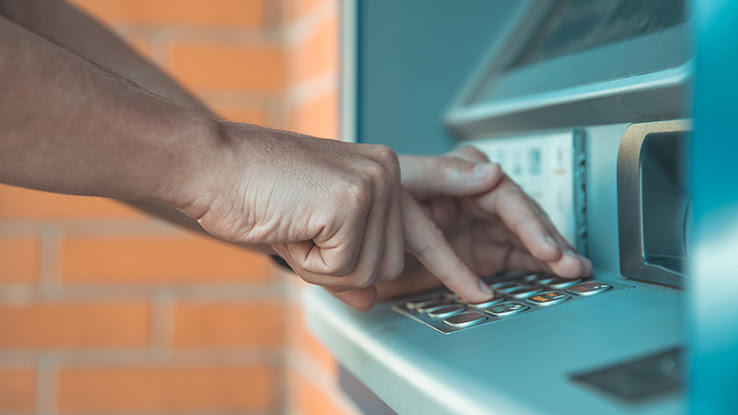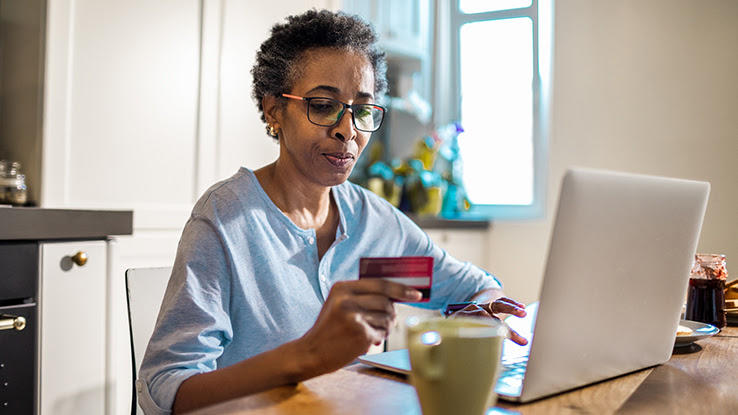
When billions of financial transactions are conducted each day, fraud and identity theft cases have never been higher. Not only do consumers have to worry about their physical credit or debit card being stolen, but they also have to worry about malicious websites stealing the information for nefarious purposes. Protecting one’s identity has never been more important.
Even if you avoid questionable websites, review a site’s security certificate, or check with the Better Business Bureau about a company’s reputation, the potential for fraud and identity theft is high. Luckily, credit card companies added a small yet effective security measure to help reduce fraudulent activity: the “three-digit code on the back,” otherwise known as the CVV code.
CVV Code Definition
CVV stands for “Card Verification Value” and was established by credit card companies to add an extra layer of security to credit card purchases. Since more people started making purchases online, the number of credit card fraud cases also increased. CVV codes are a security feature for transactions where the card is not present at the time of purchase.

When someone makes a purchase online or over the phone, the merchant asks for the CVV code to verify the credit card is indeed in the consumer’s hand. CVV codes allow for a cryptographic check to verify the relevant card and personal information embossed on the front. Each credit card company has a different name for the card. Visa calls it a CVV, MasterCard refers to the number as CVC (Card Verification Code), and American Express named it CID (Card Identification).
CVV Code Format
CVV codes appear on most credit and debit cards. The feature is a three or four-digit number. The number of CVV digits is dependent on the credit card company.

As opposed to the credit card number embossed or raised, a CVV number is printed on the front or back of the card.
CVV Code vs. PIN Number
Debit cards will also include a PIN, which stands for “personal identification number.” The bank assigns the CVV code to the card user while the cardholder chooses a PIN, the primary difference between the two. The CVV does not prove that the cardholder is the person making the transaction; that is the PIN function.

The PIN is literally the identifier of the cardholder. Theoretically, once the cardholder selects a four-digit PIN, they will not share the number with anyone else. For security purposes, no one should know a PIN. Unless, of course, your wife demands to know it.
Where Is Your CVV Code Located on Your Card?
Some credit or debit cards have the CVV code somewhere on the front of the card, usually above the 16-digit credit card number. Most credit and debit cards place the CVV code on the back of the card.

If you open your wallet and pull out a credit or debit card and do not see it on the front, turn the card around. Within the white signature line is where you’ll find your CVV code.
How Are CVV Codes Generated?
Despite what one might believe, CVV codes are not randomly generated. Banks generate the CVV number using four bits of information: the primary user’s account number, the card’s four-digit expiration date, a three-digit service code, and a DES (Data Encryption Standard).

We’d love to tell you exactly how the algorithms generate the CVV code, but we’d be lying. For obvious security purposes, each bank has its own method to determine the CVV code.
Purpose of CVV
As mentioned earlier, the CVV code is a security buffer to prevent fraud in certain transactions. Most fraudulent mail orders/telephone (MOTO) and now online transactions are mainly processed without the presence of the cardholder. Since the data from the credit or debit card is stolen and not the card itself, matching a CVV is an effective tool to help decrease fraud cases.

Unlike the credit or debit card number, CVV codes are not stored in any system. Merchants, payment gateways, credit card processors, and banks will only ask for the number once to confirm the cardholder is present before it’s deleted. The point is to ensure the person using the card is the one conducting the transaction. The CVV code is easily scratched off of the back of the card.
How CVV Codes Help Protect You
If someone acquires the credit card company, card number, and name of a cardholder, they can potentially wreak a lot of financial havoc on someone’s life. According to the Federal Bureau of Investigation (FBI), “Credit card fraud is the unauthorized use of a credit or debit card, or similar payment tool (ACH, EFT, recurring charge, etc.), to fraudulently obtain money or property. Credit and debit card numbers can be stolen from unsecured websites or can be obtained in an identity theft scheme.”

If a merchant is conducting a transaction and asks for the CVV code, it’s up to the purchaser to provide the accurate number. The CVV code can protect you because it is up to the merchant to decide whether or not to finish the transaction. Add an extra layer of security by memorizing the three or four-digit number before removing it from the back of the card. That way, only you will know the number.
A cardholder can also do a few other things to protect their card information from falling into the wrong hands. According to Forbes, you can:
- Install anti-virus software and keep it updated.
- Create a strong password for the home Wi-Fi network. Use different passwords for each account and look into using a password manager.
- Only enter credit card information on trusted websites. This involves a little research into the company’s consumer reports.
- Use a Virtual Private Network (VPN) to prevent malicious actors from accessing your network.
- Do not share or store photos of a credit card at any time.
- Ignore all unsolicited requests for credit card numbers. Always be the one to initiate a transaction using a credit or debit card.
- Check and re-check your bank and credit card account activity regularly.





